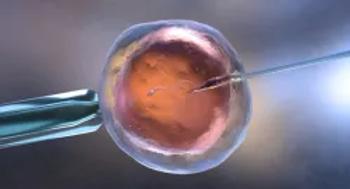
A follow-up of a trial cohort showed that children aged 5 years born to pregnant smokers had improved airway function when vitamin C supplementation was administered during pregnancy compared to placebo.

A follow-up of a trial cohort showed that children aged 5 years born to pregnant smokers had improved airway function when vitamin C supplementation was administered during pregnancy compared to placebo.

In a recent study, sugar warnings and a lack of misleading front-of-package marketing reduced the proportion of caregivers who selected sugar-sweetened beverages for young children.

Arthrex’s TightRope implant for treating pediatric anterior cruciate ligament (ACL) injuries has received clearance from the US Food and Drug Administration.

While an economic evaluation showed reduced costs for school screening and optometric examination strategies, these changes were not significant when compared to primary care screening.

A study in JAMA Pediatrics explored the possibility of prenatal and infant exposure to acid-suppressive medication (ASM) and increased risk of allergic diseases in children.

Patients get better care from specialists who trained with referring PCP, study finds.

A recent study found that while children exposed to benzodiazepine during pregnancy had a greater risk of developing autism spectrum disorder (ASD) and attention-deficit/hyperactivity disorder (ADHD), siblings without exposure saw similar risks of neurodevelopmental disorders.

The National Institutes of Health has given 8 research grants for refining new technologies to provide early diagnosis of severe illness associated with COVID-19 infection in children.

A study published in the journal Sleep and Breathing found sleep quality influenced newborn weight in a gender-specific and trimester-specific way.

A phase 3 trial of lomitapide showed safety and efficacy for treating homozygous familial hypercholesterolemia (HoFH) in pediatric patients aged 5 to 17 years.

The February 2023 edition of Pediatrics included evidence-based guidelines from the American Academy of Pediatrics on evaluating and treating obesity in children and adolescents.

Children definite motor problems were more likely to have psychotic experiences compared to children with no definite motor problems.

VERO Biotech Inc has announced a US Food and Drug Administration approval for the third generation of their tankless Genosyl Delivery System.

Patients with a history of multisystem inflammatory syndrome in children (MIS-C) completed a questionnaire about adverse reactions following COVID-19 vaccination, and no serious adverse events were recorded.

Studies consistently show patients’ health outcomes are connected to their ability to access, afford and adhere to their medications.

A recent study found that children were more likely to present with high BMI and obesity if they had low Child Opportunity Index scores early in life.

Recent research projects the prevalence of type 1 and type 2 diabetes among youths will rise through 2060.

Using data from more than 25,000 preschool-aged children in Sweden provides an overview in trends of weight gain and BMI changes that may have impacted pediatric populations during the COVID-19 pandemic.

The US Food Administration has agreed to review an application for nirsevimab (Beyfortus; AstraZeneca and Sanofi) to protect infants against RSV.

In a recent study, it was found adolescents who frequently checked social media had a lower neural sensitivity to social anticipation.

A recent review found that early diagnosis and adequate treatment is important in preventing neurodevelopmental impairments in newborns with congenital hypothyroidism

A recent study found that children were 7.5 times more likely to visit behavioral health services after positive screening for adverse childhood experiences.

Novo Nordisk has announced their product Wegovy received approval from the US Food and Drug Administration for use in adolescents aged 12 years and older with obesity.

We revisit some of last year’s top articles about autism spectrum disorder.

At the end of 2022, we revisit some of this year’s top articles.

In a recent trial, children aged 6 to 13 with vitamin D deficiency did not see influence on linear growth, body composition, or pubertal development when taking vitamin D supplements.

A look at what the Contemporary Pediatrics® team covered this week.

The American Academy of Pediatrics has updated their report, “Exploitation, Labor and Sex Trafficking of Children and Adolescents: Health Care Needs of Patients,” to provide updated guidance on how physicians can recognize and help children and adolescents subjected to trafficking or exploitation.

The American Academy of Pediatrics has provided 10 tips parents and guardians can utilize to keep their children warm and safe outdoors this winter.

The health care industry will face myriad challenges in the coming year.